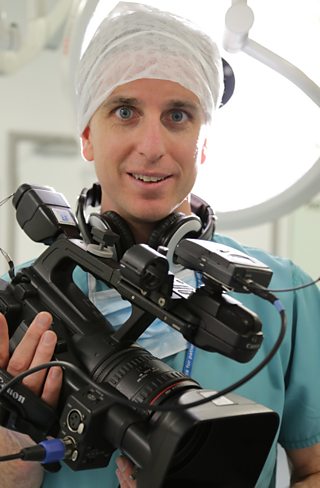Director's Blog
Series Director Tom Beard talks about turning an Emergency Department into his latest set.
I’ve hardly ever spent anytime in a hospital, so arriving at Addenbrooke’s and witnessing the sharp end of emergency medicine – the most life threatening injuries – was a bit of a shock to the system at first. I just couldn’t work out how the doctors and nurses could remain so calm and professional when someone’s life potentially hung in the balance in front of them…

We filmed the East of England Major Trauma Network for nearly four months. And because more major trauma injuries happen in the evening and at night, this is when we concentrated our energy. Every evening we had two cameras out with the two brilliant air ambulance charities covering the region: Magpas and the East Anglia Air Ambulance. This was to try and make sure we could film the very beginning of at least some of the cases that we followed for the series. Without seeing the aftermath of the accident itself – the wreckage of cars, the efforts of the emergency services to get people out – I think it’s difficult to fully appreciate the challenge the medics face, and the life changing impact that this one moment has on the patients.
We also had two cameras in Addenbrooke’s Hospital. It’s a big place to cover, with 7500 people working there, so we had to be very focused about which patient stories we wanted to follow. The first thing our producers would do, if the patient was conscious and not in immediate danger, was to explain the series and ask for the patient’s permission to film. The vast majority of people were aware of the very important job that the medics were doing to help them, and were happy for this to be filmed. And we made sure we carried on discussing the series with the patients throughout the filming and edit.
I was mainly based in the Emergency Department, and as the shoot progressed I became able to keep the adrenaline under control when a critical patient arrived and focus fully on understanding the new Major Trauma system that swung into action to save their life. I began to see that this efficient approach is key to making sure that the doctors and nurses are as calm and professional as they are and to getting the best possible care to people in life and death situations.
The majority of the cases we saw were road traffic collisions, and I was shocked to be told that last 1800 people die in the UK from car accidents. In that same period 25,000 people were either killed or seriously injured in accidents on the road. The next time I got in my car, I had a sudden realization about the new system that so many people are working so hard to put in place - we never know when it might be us that needs it.
On busy evenings we found ourselves filming all night and then had to film in shifts to cover surgery the next day, not to mention keeping in touch with an increasing number of patients across the hospital. But, even though we’d done nothing to help medically, there was a great reward in seeing patients gradually recovering. As they regained their strength, we’d gradually got to know the real them, rather than the injured, scared person that had been rushed in by Ambulance.
